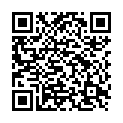|
|
|
| Module code: MST.ERO |
|
2V+2P (4 hours per week) |
|
5 |
| Semester: according to optional course list |
| Mandatory course: no |
Language of instruction:
German |
Assessment:
Project work
[updated 08.05.2008]
|
KI842 Computer Science and Communication Systems, Master, ASPO 01.04.2016
, semester 2, optional course, informatics specific
MTM.ERO Mechatronics, Master, ASPO 01.04.2020
, optional course, informatics specific
MST.ERO Mechatronics and Sensor Technology, Master, ASPO 01.04.2016
, optional course, informatics specific
PIM-WI20 (P221-0163) Applied Informatics, Master, ASPO 01.10.2011
, semester 1, optional course, informatics specific
MST.ERO Mechatronics and Sensor Technology, Master, ASPO 01.10.2011
, optional course, informatics specific
|
60 class hours (= 45 clock hours) over a 15-week period.
The total student study time is 150 hours (equivalent to 5 ECTS credits).
There are therefore 105 hours available for class preparation and follow-up work and exam preparation.
|
Recommended prerequisites (modules):
None.
|
Recommended as prerequisite for:
|
Module coordinator:
Prof. Dr. Steffen Knapp |
Lecturer:
Dipl.-Ing. Dirk Ammon
[updated 26.04.2012]
|
Learning outcomes:
The theoretical part of this course aims at acquainting students with basic tasks and problems from the field of mobile robotics such as, self-localization, navigation, map building and route planning and providing them with the skills necessary to develop appropriate solutions.
This knowledge is then applied to a project carried out in the practical part of the module. The focus of the assignment is less the construction of a robot (Lego NXT), but rather the programming.
After successfully completing this course, students will be able to interpret sensor data intelligently and make efficient use of this data by integrating it into multiple processes.
[updated 01.10.2020]
|
Module content:
I. Theoretical part (lecture)
1. Introduction
1.1 History and development of robotics
1.2 Basics and definitions
1.3 Control paradigms
2. Hardware
2.1 Sensors used in robotics
2.2 Actuators used in robotics
2.3 Mechanics and robot kinematics
3. Navigation
3.1 Mathematical principles
3.2 Dead reckoning
3.3 Navigation using landmarks - Examples from biology
4. Map building and route planning
4.1 Measurement data acquisition with ultrasonic sensors
4.2 Sensor fusion and mapping
II. Practical part (Project)
Creating a mobile robot (groups of 2 students each)
- Familiarization with the hardware and software
- Group-specific task description and project discussions
- Design, implementation and test
- Documentation
- Lecture with presentation
[updated 01.10.2020]
|
Recommended or required reading:
NEHMZOW, Ulrich, Mobile Robotik, "Eine praktische Einführung", Springer Verlag Berlin-Heidelberg, 2002
GOCKEL, DILLMANN, Embedded Robotics, "Das Praxisbuch", Elektor-Verlag, Aachen, 2005
BRÄUNL, THOMAS, Embedded Robotics, Springer Verlag, Berlin-Heidelberg, 2008, (3.Aufl.)
[updated 01.10.2020]
|


